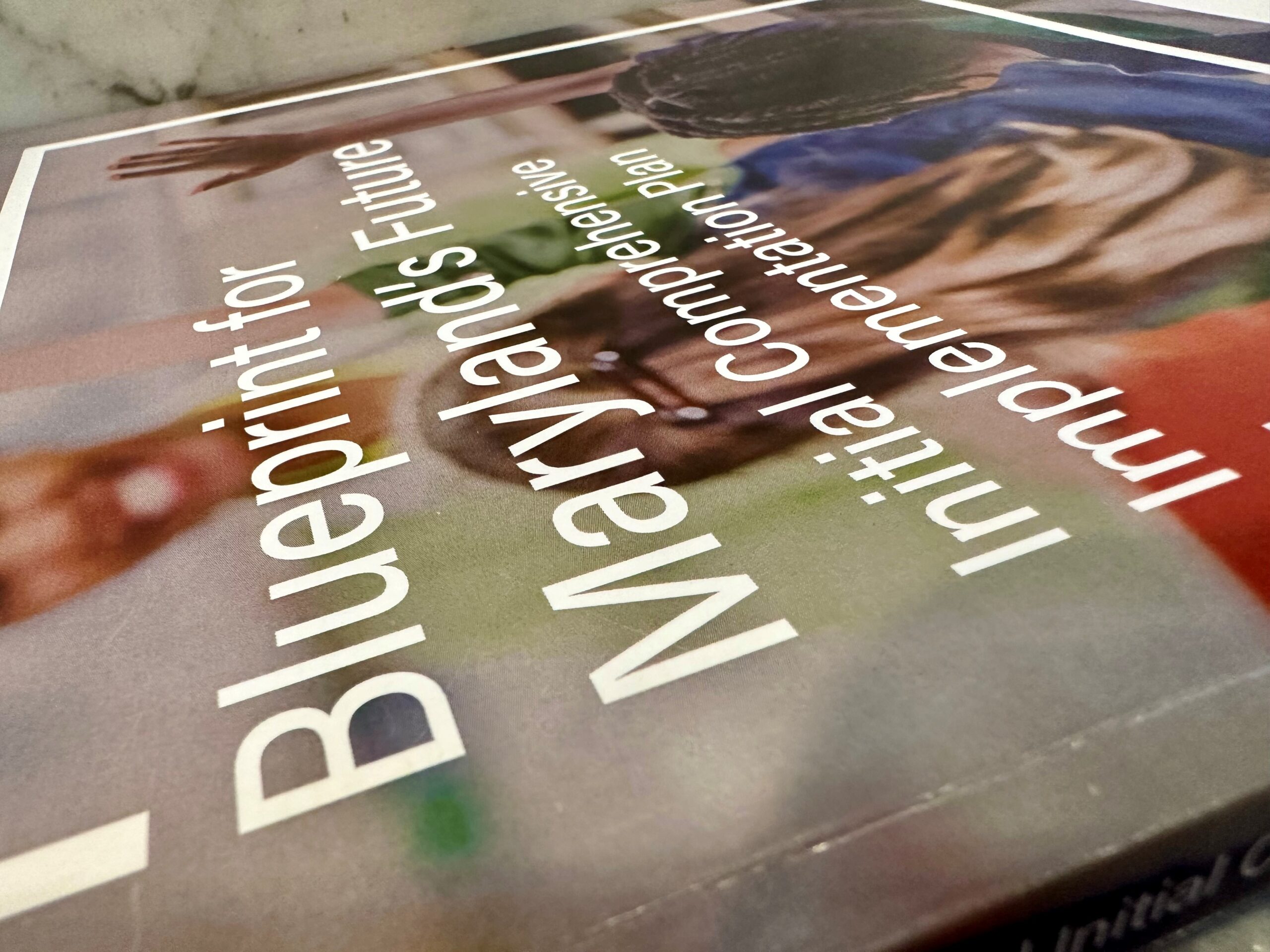
By Shamoyia Gardiner
The writer is a former public school teacher and the executive director of Strong Schools Maryland, an organization that advocates for better public schools.
When the General Assembly overrode Governor Hogan’s veto of the Blueprint for Maryland’s Future in February 2021, they bolstered Maryland’s response to the COVID-19 pandemic in ways we don’t yet know how to measure. The Blueprint is a long-term education funding and policy shifting plan with the explicit goal of creating world-class schools over the next decade and the potential to secure a prosperous future for the entire state.
The Blueprint law is the result of multiple years’ research by the Kirwan Commission, debate by the state legislature, and advocacy by organizations like Strong Schools Maryland and individuals like our statewide Teams of 10 network. The final vision of the Blueprint is clear: to create a world-class system of public schools in the state. For Maryland, that means our schools will:
● expand early learning and family support offerings, including free and affordable pre-K;
● increase the qualification and diversity of educators in the state while elevating the
teaching profession with commensurate salary schedules;
● expand college and career readiness pathways to allow students to earn college credit
and/or workforce-recognized credentials by high school graduation; and
● dedicate funds to schools serving high concentrations of students experiencing poverty
while expanding the state’s Community Schools strategy and coordinating
school-community partnerships to support students’ mental and behavioral health.
The fifth major focus of the Blueprint is providing governance and accountability for the
implementation of the law’s many policies and new funding streams, which brings us to the brand-new, independent state board responsible for its oversight: the Accountability and Implementation Board (AIB). On Sept. 1, the Blueprint AIB Nominating Committee
announced a list of nine candidates to serve on the seven-member AIB. Governor Hogan has 30 days from that announcement to appoint the seven AIB members, after which he will work with House Speaker Jones and Senate President Ferguson to jointly appoint a chair of the AIB.
Governor Hogan should act with urgency to appoint the AIB, particularly because several Blueprint implementation deadlines have already passed since July without the intended oversight. Had the governor not vetoed the law in 2020, the central accountability systems required for successful implementation could already be in place. His answer cannot be to continue to delay while we see mounting evidence every day that our students cannot afford to continue to wait.
Moreover, the AIB has significant foundation-building work to do in the next several months, much of which will shape our success in creating world-class schools as students and school communities return amidst the ongoing pandemic.
If the governor acts before the 30-day appointment deadline, he will give the AIB a bit more time to hire an executive director, who would then have a bit more time to hire up to 14 staff members to support the AIB in its important, complex work:
● By Nov. 1, the AIB must produce a public report on progress made implementing the Blueprint so far, including how well state and local entities are carrying out their responsibilities, whether funding is sufficient, and whether any legislative adjustment should be made to the law in the 2022 session that begins on Jan. 12.
● By Feb. 15, 2022, the AIB must produce a comprehensive statewide Blueprint
implementation plan, which will define intended outcomes for the law and establish
evaluative metrics for state and local governments. This plan will also provide a
framework for state and local government agencies responsible for implementing parts
of the law as they create their own implementation plans, due by June 15, 2022.
While many valuable conversations have taken place this year about the use of short-term federal relief dollars, we must be willing to devote similar attention to our own state’s visionary initiatives. There is a lot ahead of us, especially when we view the implementation of the Blueprint in the larger context of experiencing and providing public education during a public health crisis, in the midst of major racial and economic strife, and a wave of hyper-individualism.
This is exactly why this moment, the selection of the AIB, is so important. The next several
months will create opportunities for the open public discussion and transparent planning
processes necessary to ensure the opportunity of the Blueprint is leveraged well and that
stakeholders — students, families, and school community members — are welcome to co-create the world-class public schools that will serve them.




 Creative Commons Attribution
Creative Commons Attribution